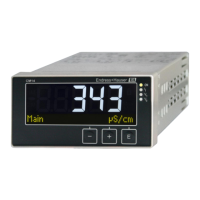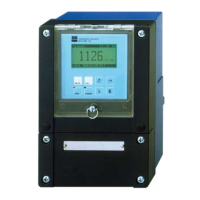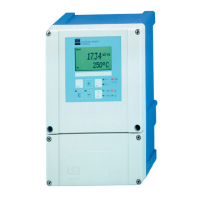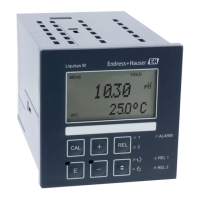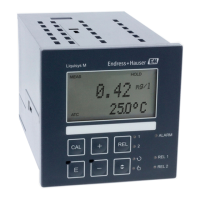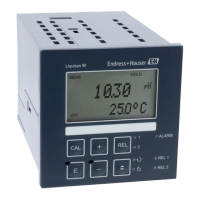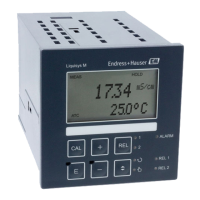CM14 Commissioning
Endress+Hauser 23
1
2
a[inch]
0
5
10 15
20
2525
a[mm]
0.80
1.00
1.20
1.40
f
0.20
0.39
0.59
0.79
0.98
A0005441
5 Relationship between the installation factor (f) and the distance from wall (a)
1 Electrically conductive pipe wall
2 Electrically insulating pipe wall
6.5.3 Temperature compensation
The conductivity of a liquid depends heavily on the temperature, as the mobility of the ions
and the number of dissociated molecules are temperature-dependent. In order to compare
measured values, they must be referenced to a defined temperature. The reference
temperature is 25 °C (77 °F).
When specifying the conductivity, it is always necessary to specify the temperature. К(T
0
) is
the conductivity measured at 25 °C (77 °F) or recalculated to 25 °C (77 °F).
The temperature coefficient α represents the percentage change in the conductivity per degree
of temperature change. The conductivity К at the process temperature is calculated as follows:
К(T) = К(T
0
) (1 + α(T - T
0
))
К(T) conductivity at process temperature T
К(T
0
) conductivity at reference temperature T
0
The temperature coefficient depends on both the chemical composition of the solution and on
the temperature, and is between 1 % and 5 % per °C. The electrical conductivity of the majority
of diluted saline solutions and natural waters changes in a close-to-linear fashion.
Typical values for the temperature coefficient Alpha:
Natural water Approx. 2 %/K
Salts (e.g. NaCl) Approx. 2.1 %/K

